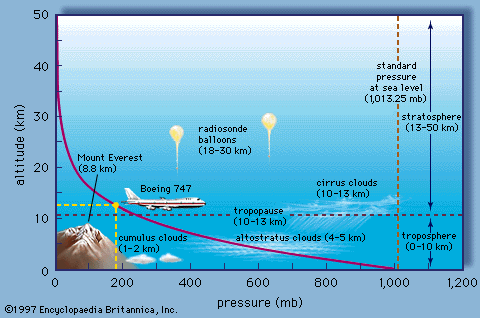When, hopefully, Virgin Galactic spacecraft start regular operations in a few years, they will be simply travelling upwards, then achieving weightlessness for a short while, followed by a return straight back down, as they cannot carry anything approaching enough fuel to achieve orbit.
So they are basically recreating Alan Shepard's flight from 55 years ago, travelling up and down, rather than around and around.
On the other hand, when NASA achieved flights to the moon, their Apollo spacecraft velocity was such that their reentry angles had to stay within certain limits. If they were too steep, they would burn up, if they were too shallow they would skip/bounce off the Earth's atmosphere and back into space.
My question is, bearing in mind the density of air versus altitude in the picture above, is it possible for a suborbital flight to attain a velocity sufficient to allow the vehicle to achieve a skip and then descend, so as to achieve a significant distance?
Unfortunately, this chart is not detailed enough to show anything but effectively zero air density, even at 50 km, around 20 km less than a suborbital flight.
I would not be asking this question if I knew enough fluid dynamics to calculate it myself, but in specific terms, is there an equation from fluid dynamics that covers this idea? Obviously, velocity and air resistance/ density are crucial, but I would assume a velocity of 3000 to 5000 kph, using rockets.


